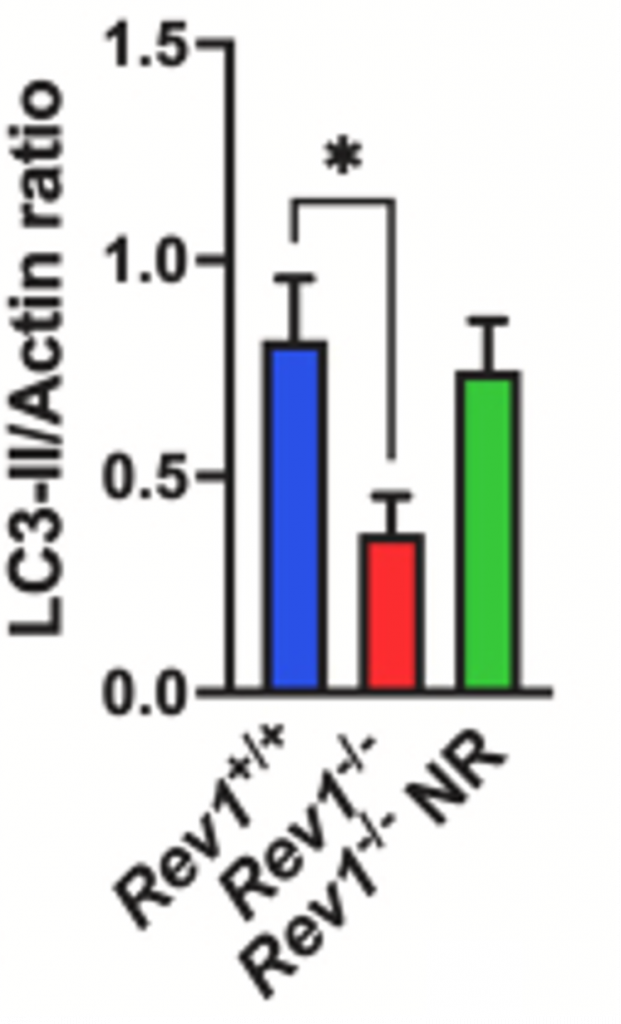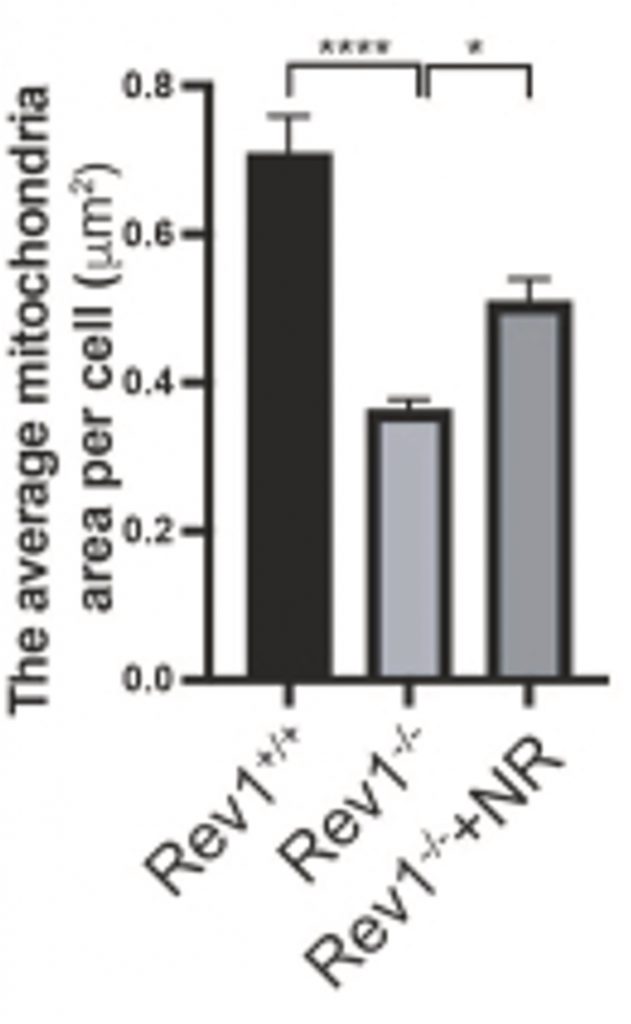Key Points:
- In a cell model for cellular stress, NR enhances autophagy — the system our cells use for disposing of unwanted material to promote tissue and organ health.
- NR increases the size of mitochondria, indicating improvements in mitochondrial health that promote energy production and cell survival.
Scientists have begun to identify the underlying processes that drive aging, for which DNA damage is primary. Therapeutically targeting these underlying processes, especially primary drivers of aging like DNA damage, could counter the aging process and prevent or delay age-related diseases like cancer, neurodegenerative diseases, and diabetes.
Now, as reported in Heliyon, researchers from the University of Copenhagen in Denmark have depleted a gene called Rev1 from mouse cells to model insufficient DNA damage repair. In this cellular stress model, Anugula and colleagues show that markers of cellular health — autophagy and mitochondrial size — are dysregulated. However, NR is shown to counter this dysregulation, suggesting that NR counters cellular deficits induced by DNA replication stress.
“This study provides new insights into the intersection between DNA damage repair, autophagy, and metabolism,” said the authors.
NR Alleviates Cellular Stress
To examine autophagy, Anugula and colleagues measured a protein called LC3-II from stressed cells. They found that the stressed cells had lower levels of LC3-II, indicating deficits in autophagy. However, treating stressed cells with NR prevented the lowering of LC3-II protein, suggesting that NR prevents deficits in autophagy from cellular stress.

Defective autophagy can cause the accumulation of dysfunctional mitochondria, so Anugula and colleagues examined the structure of mitochondria in stressed cells using a powerful microscope called a transmission electron microscope. They found that the stressed cells had smaller mitochondria, suggesting mitochondrial dysfunction. However, NR increased the size of the mitochondria, suggesting that NR counters mitochondrial dysfunction.

Overall, the findings of Anugula and colleagues suggest that NR alleviates the consequences of cellular stress from insufficient DNA damage repair, namely deficits in autophagy and mitochondrial structure. As insufficient DNA damage repair can lead to DNA damage, these findings suggest that NR can counter this primary driver of aging.
NR Counters Aging in Animals and Humans
To support the idea that NR counters aging, suggested by Anugula and colleagues, animal studies have shown that NR shields against diabetes and curbs fat gain, enhances female reproductive lifespan and promotes fertility, counters neuron death, slows liver cancer progression, reduces stroke-induced brain damage, halts hearing loss, and limits the deterioration of multiple organs.
Furthermore, in humans, NR has been shown to reverse NAD+ deficiency and inflammation in arthritis, improve markers of kidney function, and increase metabolic efficiency by reducing fat in the blood. That NR has such a wide range of effects across different pathological conditions suggests that it targets a process or processes that underlie such pathologies. Namely, by boosting NAD+, NR could target several hallmarks of aging, including DNA instability.